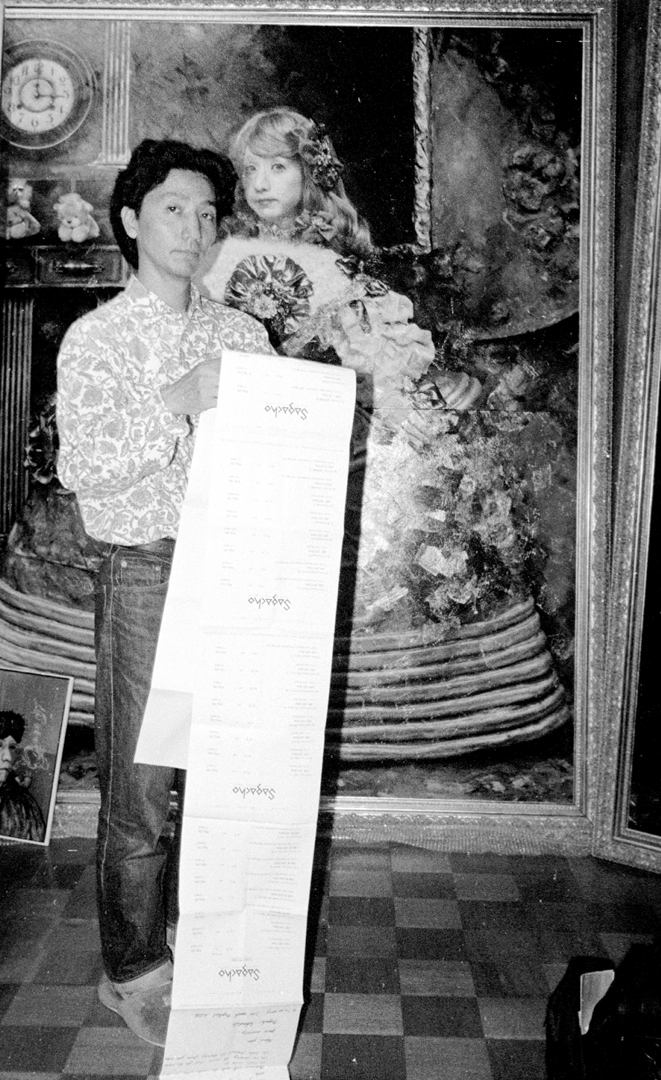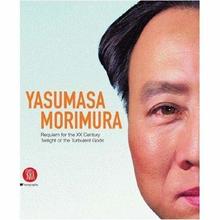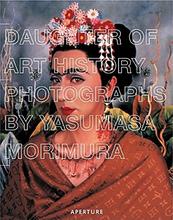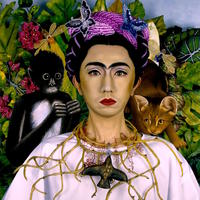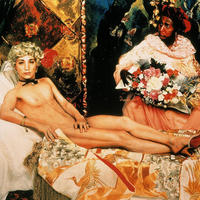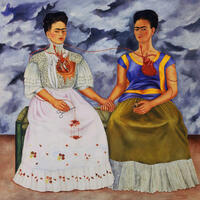More about Yasumasa Morimura
- All
- Info
- Shop

Sr. Editor
Yusumasa Morimura is an art historical chameleon. He’s made his living appropriating famous art and artists.
He thinks of an iconic image, like Johannes Vermeer’s Girl with a Pearl Earring or Leonardo da Vinci’s Mona Lisa, and dresses up like the famous painting. If you glance at them quickly you almost can’t tell the difference. Upon closer inspection however, you realize your favorite subjects have been replaced by a slight Japanese man in drag!
In an attempt to comment on the over-idolization of certain artists, he’s masqueraded as Salvador Dali, Andy Warhol, Yves Klein and Pablo Picasso. Is he poking fun at art’s superstars, paying homage to creators he admires, or riding the coattails of those who’ve already achieved fame? Arguments can be made for all.
Morimura does celebrities, too. Like Albert Einstein with the crazy white hair, Audrey Hepburn in her elegant black shift, even a nude pin-up of sexpot Marilyn Monroe- fake boobs and all! If anything, you’ve got to respect his attention to detail. They’re spitting images. And if the whole art thing doesn’t work out for him, he can always make a living as a celebrity impersonator, taking pictures with tourists on Hollywood and Vine.
Featured Content
Here is what Wikipedia says about Yasumasa Morimura


Yasumasa Morimura (森村 泰昌, Morimura Yasumasa, born June 11, 1951) is a contemporary Japanese performance and appropriation artist whose work encompasses photography, film, and live performance. He is known for his reinterpretation of recognizable artworks and figures from art history, history, and mass media through his adoption of personas that transcend national, ethnic, gendered, and racial boundaries. Across his photographic and performative series, Morimura's works explore a number of interconnected themes, including: the nature of identity and its ability to undergo change, postcolonialism, authorship, and the Western view of Japan – and Asia, more broadly – as feminine.
Originally intent on channeling his creative energy into black-and-white still life photography, Morimura struggled to ascertain his identity and decided to visualize this inner struggle through self-portraiture. In 1985, Portrait (Van Gogh), marked the first of dozens of self-portraits Morimura completed in which he adopted the role of established artists, major historical figures, celebrated popular culture icons, and identifiable subjects from well-known artworks.
Since the 1980s, Morimura's artistic process entails a rigorous system in which he transforms his entire body into a nearly identical replica of his designated subject through elaborate costumes, makeup, props, and set designs. Once digital photography and computer editing software became more accessible and refined in the late-1990s, Morimura's works demonstrate greater visual complexity in his manipulation of composition, lighting, and the number of figures he portrays within a single artwork.
For the last two and a half decades, Morimura has brought his personas to life in short video, film, and live performances in which he expresses their thoughts through movement and scripted monologues.
Check out the full Wikipedia article about Yasumasa Morimura

